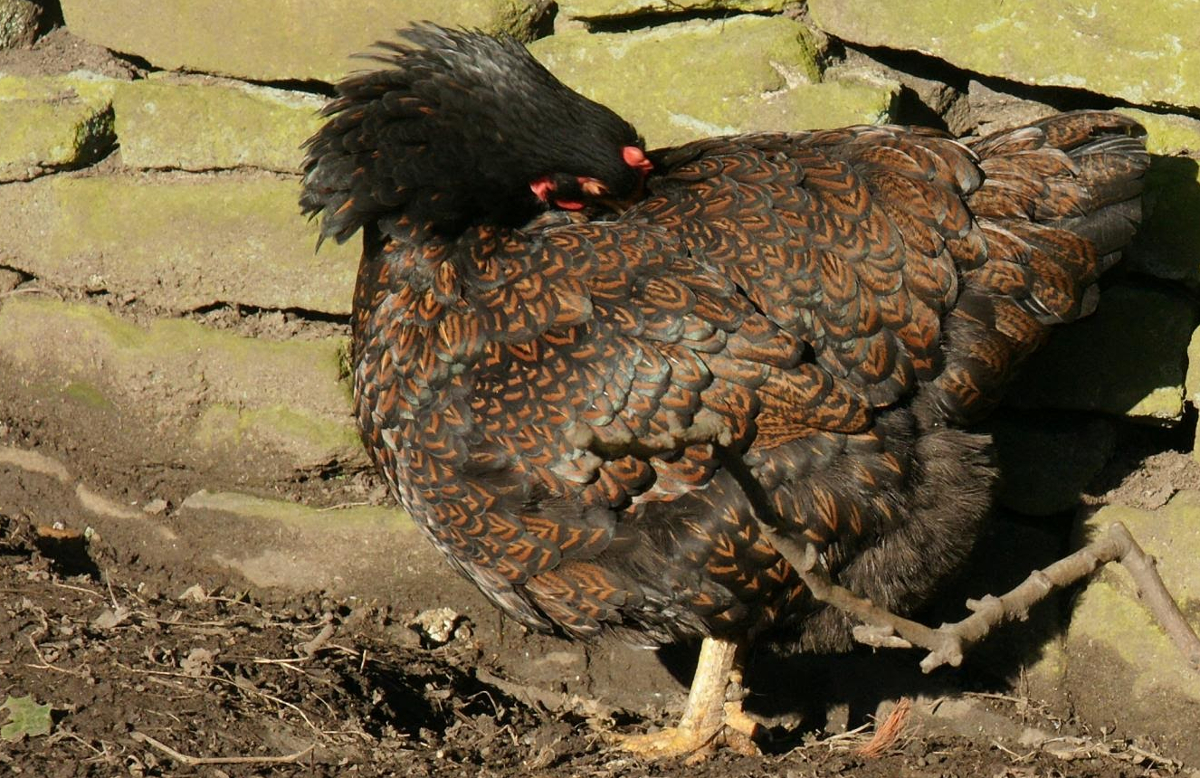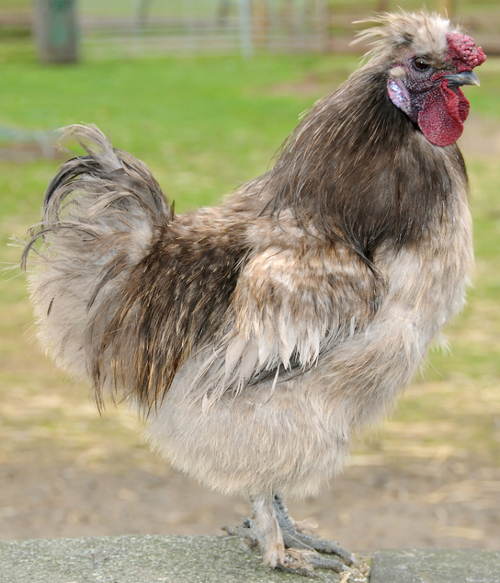Dealing with older hens or biddies.

I like having old hens that are past their most productive days about the place. The hen in the header image above is an 11 year old Barnevelder with spurs that would rival a roosters.
Table of Contents
I use my older surviving hens for a variety of purposes like brooding and teaching youngsters amongst others. I like to keep my older birds as companions for younger birds. They can help establish the pecking order within the flock and provide a sense of stability and security for younger members.
Most people start keeping chickens without a thought for what happens as they get older. Happy, well looked after hens will easily live 5 or 8 years and maybe even longer. I have 2 that are at least 11 years old according to their leg rings.
Interestingly most people assume that chickens are short lived, a myth, helped along by the fact that commercial laying hens are only kept for 18 months and broilers can be ready in as little as 40 days.
The oldest known hen was 16 years old and there are plenty of questions to answer about keeping older birds.
When is a chicken considered old?
Chickens are considered old after they are 5 years old or more and are called biddies or spent hens. It is around this age they generally begin to die off and your flock will begin to thin out over time if you don't add new birds.
Below: An 8 year old Silkie cross rooster.

The reality of modern chicken keeping is that unproductive chickens are kept on as family pats until they pass away naturally or are put down by a vet when they are suffering.
What used to happen to old chickens?
So in my grandmothers day and probably a lot more recently as well anyone who kept chickens would put them in the pot when they became unproductive.
These were producing animals that had to pay their way and becoming stewing fowl was just what happened to old poultry. They needed to be tenderised and marinated as well as being cooked slowly otherwise they would be tough.
In the commercial egg production environment egg laying chickens are routinely replaced between 80 and 96 weeks of age and are called spent hens. These are often sent away to be processed into ready meals or dog and cat feed.
Most people who keep backyard hens these days are unlikely to get plucking because their chickens are only laying a few eggs a year.
We have a number of older hens (5+) with oldest being around 7. We still get the odd egg, they start a month or so later and only produce around 1 a week but they are huge with a higher percentage of double yolkers.
I like having older birds around, they spend much longer resting and sunbathing and have a very peaceful air about them. There is a chance they can still be of use as a broody hen.
They eat considerably less as they stop producing eggs and you may notice a few other changes, they may lose some weight and a little condition and the feathers tart to look a little tatty. They comb will shrink a little and lose it's bright red colour and get floppy . Moulting patterns may change and you will need to keep an eye on them to make sure they don't get cold if they are short of feathers.
The legs may darker and lose the odd scale and you may need to trim the odd claw and just like us humans they mail be a little stiff, especially in the mornings.
Do older chickens require any special care?
Yes and no. I find in some ways my older chickens are easier to look after. They eat less and seem to be happy in themselves and have been around a lot longer.
It's important to note that older chickens may require special care in terms of nutrition and health as they age. Regular health check-ups, appropriate diets, and attention to any age-related issues can help keep them comfortable and healthy in their later years.
Older birds do not have the stress that laying eggs puts on their bodies and generally have a secure and long standing position in the flock.
They do however have old bodies and we all know how that begins to feel over time. Also the ravages of disease will take some toll. Chickens also have to cope with Coccidiosis all of their lives.
Muscular organs like the crop may become pendulous and more likely to suffer from problems so keep plenty of grit in the diet.
There are a couple of ways to tell the age of a chicken:
- By how many eggs she lays. Older hens lay fewer eggs.
- The size of the eggs. Most breeds start laying between 5 and 6 months of age with smaller eggs that get bigger over time.
- Quality of the eggs. If the eggs are wonky or have no shell or have a very soft shell it could mean the bird is old.
- State of the legs and feet. Rough legs or missing scales.
- Spurs. The spurs on a cockerel have rings corresponding to every year of age.
- The feathers. Older chickens have patchy and faded feathers as they are not always changed during the moult.
The oldest chicken in 16 years old. The oldest chicken I have ever had is 13 years and she was a bantam Wyandotte.
The average lifespan for a chicken is around 6 years. You can expect a hybrid hens' lifespan to be around 4 or 5 years, whereas Heritage breeds should closer to 8 years old.
The oldest 2 birds in flock are both 11 years old and are rare or heritage breeds. I find hybrids die younger because of the stress laying so many eggs puts on their bodies.
Do chickens die of old age?
Yes, the vast majority of backyard chickens probably die of old age. I don't know many keepers that cull old birds from their flock. Most go on to be family pets
The mortality curve for chickens looks like a bath tub. More chickens die when they are young and then there is a period of stability during middle age and then the number of deaths increases into old age.
Below: The mortality curve for chickens.

Chickens die from many conditions like disease, cardiovascular or respiratory ailments, egg-laying screw-ups like internal laying and prolapse. Mostly however they skirt around the dangers and make it into old age.
What to do with old chickens:
In the old days, chickens that were past their best ended up in the pot. This made more sense as most chickens from this time were dual purpose breeds bred for their meat as well as their eggs whereas most modern birds are eggs laying hybrids and have very little meat on them.
Egg laying chickens are not really good to eat, they tend to be tough and stringy and have very little meat ion them. Old commercial chickens generally end up as minced chicken in chicken Kiev or in dog and cat food.
While older chickens may not lay eggs as frequently as younger ones, they can still be productive layers. They might produce fewer eggs, but the eggs can be larger, tend to be double yolkers and have thicker shells. If you're patient and don't need a high volume of eggs, older hens can still contribute to your egg supply.
If you are involved in poultry shows or exhibitions, older chickens may still be competitive in these events. Some breeds and individuals age more gracefully than others, maintaining their appearance and conformation.
